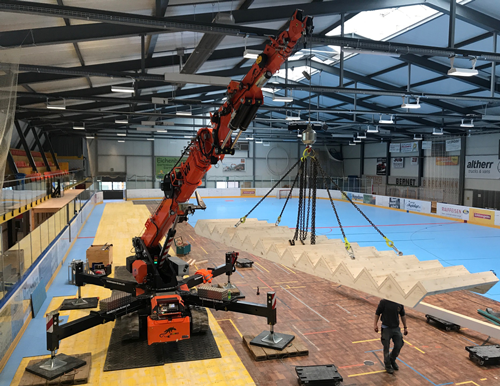Electrification of a Jekko minicrane

Electrification of a Jekko minicrane
Emission-free indoor use in Switzerland
The tightening of CO² emission regulations in Switzerland is one of many reasons why manufacturers and companies are switching to electrified commercial vehicles. The electrification of these vehicles also allows flexible use of the construction site vehicles, some of which are large and heavy, for example inside buildings or in restricted spaces.
In 2019, innolectric, in cooperation with Liftservice Krome, electrified a Jekko mini-crane model SPX1275 for the Swiss company Feldmann Pneukran + Transport AG. The mini crane was previously powered by a diesel engine. We replaced this engine with an efficient, electric drive train including a lithium-ion battery system.
The conversion to an electric powertrain will enable the Swiss customer to use the crane flexibly and emission-free in the future. Thanks to the conversion and by dispensing with an internal combustion engine, the commercial vehicle can also be used inside buildings and in particularly narrow environments that were previously inaccessible for precise work with a crane in this weight class.
The electrification of this Jekko minicrane was not the first project that innolectric implemented together with Liftservice Krome for Feldmann Pneukran + Transport AG. innolectric had previously handled the refitting for the customer for the first emission-free crane in this weight class.
Location: Hockey arena
At the beginning of 2020, the Jekko mini crane was used in the reconstruction of a field hockey arena in Switzerland. For this application, the now battery-operated working machine proves to be extremely advantageous, as it operates almost silently and completely without the production of emissions. On the one hand, these aspects relieve the present workers, on the other hand, the electrified crane offers the best possible support in confined spaces.
Moreover, the electrically operated crane only runs when it is actually in use. The electric drive is switched off during rest periods. This reduces the noise level to a minimum and saves energy.
The battery systems can easily be charged during work. In this way, the electrified crane can be used beyond one work shift without losing valuable time in a charging process. A display on the working machine allows the battery status and other operating parameters such as the current temperature or battery voltage to be monitored precisely at all times.




